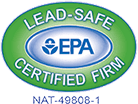
At Josh Lowe’s Dr. Energy Saver, we offer a variety of easy-to-use financing options for homeowners in Western Oregon. During our in-house visit, one of our specialists will help you find the financing options that work for you!
Crawl Space Insulation in Eugene, OR
Serving Lane County Homeowners Since 2006
At Josh Lowe's Dr. Energy Saver, we believe that the key to a comfortable and energy-efficient home starts from the ground up – right in your crawl space. Our professional crawl space insulation services are meticulously designed to ensure maximum protection for your home against the elements.
With a commitment to excellence, our team of professionals adheres to the highest service standards, deploying cutting-edge techniques and premium-quality home insulation materials to get the job done right. But our dedication to you doesn't stop there. We stand firmly behind our work, backing each project with robust warranties, adding an extra layer of assurance to your investment. Your home's comfort, energy efficiency, and longevity are our top priorities.
Call (541) 287-7022 for expert crawl space insulation in Eugene. We can also be reached through our online contact form.
Signs of Poor Crawl Space Insulation
Inadequate or damaged insulation in your crawl space can cause many problems in your home, such as moisture problems and structural damage. Because of this, it’s important to have your insulation inspected regularly by a team of professionals to ensure it is in good shape. We also recommend becoming familiar with the warning signs that something is wrong with your insulation so you know when to call Josh Lowe’s Dr. Energy Saver.
Here are some common signs you need to schedule a crawl space insulation service in Eugene:
- A sudden spike in your utility bills
- Moisture, mold, and mildew in your crawl space
- Wet insulation
- Pest activity in the crawl space
- Inconsistent temperatures throughout your home
- Warped or sagging floorboards above the crawl space
- High indoor humidity
- Cold floors
- Cracks in your drywall
- Musty odors in your home
Don’t let bad insulation in your crawl space affect the health and comfort of your home. Reach out to our experts today to schedule an inspection and get down to the bottom of the problem.

Why Choose Josh Lowe's Dr. Energy Saver?
-
Ask About Our WarrantyWe back all of our services with a warranty for your peace of mind.
-
100% Satisfaction GuaranteeYou can be confident you'll be happy when our team drives away.
-
Affordable Financing OptionsOur flexible financing options support you however you'd like to pay.
-
Get a 100% Free EstimateGet started by giving us a call and setting up a free estimate.
Our Crawl Space Insulation Solutions
As a member of the Dr. Energy Saver network, we have access to premium-quality insulation products and materials. We work closely with you to understand your needs before selecting and installing the perfect insulation for your crawl space.
We install the following types of crawl space insulation:
- Rigid foam insulation: Often referred to as “foam board,” rigid foam insulation comes in pre-cut panels. These panels are available in different thicknesses, providing various levels of protection depending on your needs.
- Spray foam insulation: This type of insulation is sprayed into place. It expands upon application, filling even the smallest of spaces for maximum energy efficiency. Spray foam insulation is available in the form of open-cell and closed-cell insulation, each of which has different densities and insulating properties.
To determine which type of insulation is best for your crawl space, call Josh Lowe’s Dr. Energy Saver today. We are available to walk you through your options and help you make the right choice.

Hear From Our Happy Customers
At Josh Lowe's Dr. Energy Saver, your satisfaction is our priority! See for yourself what our customers have to say about working with us.
-
"Best Choice Around"
Could not have had a more pleasurable experience!
Michael D. -
"Really Impressed"
Really amazing people, hard workers, and did a wonderful job!
Tiffany R. -
"By Far the Best"
I would highly recommend this company to make your home a more comfortable place to live!
Gary U. -
"Went Above and Beyond"
Our home is much warmer now!
Sue C. -
"Saved the Day"
They were on time, professional, and did exactly what had been agreed upon!
Mareva M. -
"Very Professional"
Delivered on every commitment!
John H. -
"Worth Every Penny"
These guys will do a great job!
Jeffrey W. -
"5-Star Service"
Communicates well and does outstanding work!
Vern M.
Benefits of Our Crawl Space Insulation Services
Crawl space insulation plays a critical role in maintaining the overall comfort and efficiency of your home. Properly installed insulation prevents the transfer of heat between the interior of your home and the outside environment, helping to not only keep your home warm in the winter and cool in the summer but also to keep your energy bills at a minimum. Proper crawl space insulation can also help reduce the risk of moisture-related problems – such as crawl space mold and mildew – in your home, which can lead to structural damage over time.
At Josh Lowe’s Dr. Energy Saver, we are proud to offer the best of the best in crawl space insulation. Consider some of the amazing benefits of our insulation installations below.
Here are the key benefits of rigid foam insulation:
- It does not compress, fall out of place, or lose its R-value over time
- It stops air leaks and ensures effective air sealing
- It is water and mold-resistant
- It leads to better ductwork performance
Here are the key benefits of spray foam insulation:
- It has the highest R-value per inch than any other commonly used insulation
- It is quick and easy to apply
- It is super adhesive and stays in place
- It is water-resistant
- It creates a tight air barrier
For professional insulation installation or any other crawl space solution – including encapsulation, waterproofing, weatherization, etc. – there is only one team you can truly rely on to get the job done right. Our licensed and insured experts at Josh Lowe’s Dr. Energy Saver are here to make sure your home is as comfortable and efficient as possible.
Call (541) 287-7022 for professional crawl space insulation installation services in Eugene.






